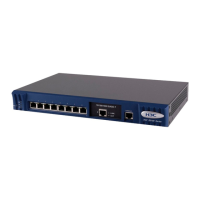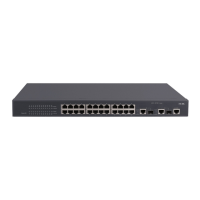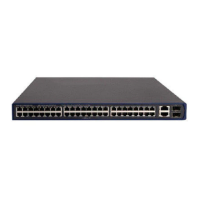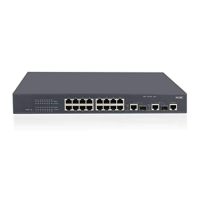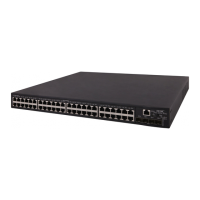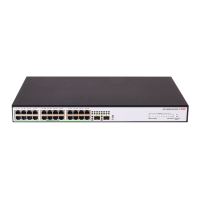3-7
Parameters
interface-type interface-number: Interface type and interface number.
Description
Use the display transceiver alarm interface command to display the current alarm information of a
single or all transceivers.
If no error occurs, None is displayed.
Table 3-5 shows the alarm information that may occur for the four types of transceivers.
Table 3-5 Description on the fields of display transceiver alarm interface
Field Remarks
GBIC/SFP
RX loss of signal RX signal is lost.
RX power high RX power is high.
RX power low RX power is low.
TX fault TX fault
TX bias high TX bias current is high.
TX bias low TX bias current is low.
TX power high TX power is high.
TX power low TX power is low.
Temp high Temperature is high.
Temp low Temperature is low.
Voltage high Voltage is high.
Voltage low Voltage is low.
Transceiver info I/O error Transceiver information read and write error
Transceiver info checksum error Transceiver information checksum error
Transceiver type and port configuration
mismatch
Transceiver type does not match port configuration.
Transceiver type not supported by port
hardware
Transceiver type is not supported on the port.
XFP
RX loss of signal RX signal is lost.
RX not ready RX is not ready
RX CDR loss of lock RX clock cannot be recovered.
RX power high RX power is high.
RX power low RX power is low.
TX not ready TX is not ready.
TX fault TX fault
TX CDR loss of lock TX clock cannot be recovered.
TX bias high TX bias current is high.
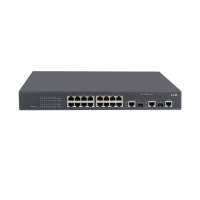
